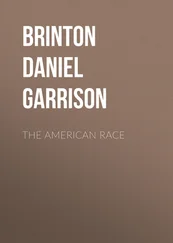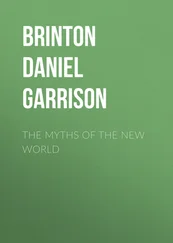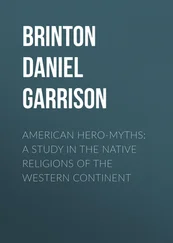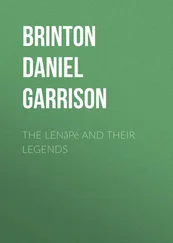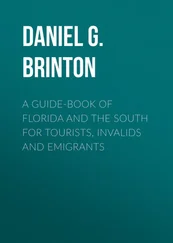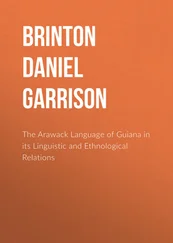Daniel Brinton - The Religious Sentiment
Здесь есть возможность читать онлайн «Daniel Brinton - The Religious Sentiment» — ознакомительный отрывок электронной книги совершенно бесплатно, а после прочтения отрывка купить полную версию. В некоторых случаях можно слушать аудио, скачать через торрент в формате fb2 и присутствует краткое содержание. ISBN: , Жанр: foreign_antique, foreign_prose, на английском языке. Описание произведения, (предисловие) а так же отзывы посетителей доступны на портале библиотеки ЛибКат.
- Название:The Religious Sentiment
- Автор:
- Жанр:
- Год:неизвестен
- ISBN:http://www.gutenberg.org/ebooks/30061
- Рейтинг книги:3 / 5. Голосов: 1
-
Избранное:Добавить в избранное
- Отзывы:
-
Ваша оценка:
- 60
- 1
- 2
- 3
- 4
- 5
The Religious Sentiment: краткое содержание, описание и аннотация
Предлагаем к чтению аннотацию, описание, краткое содержание или предисловие (зависит от того, что написал сам автор книги «The Religious Sentiment»). Если вы не нашли необходимую информацию о книге — напишите в комментариях, мы постараемся отыскать её.
The Religious Sentiment — читать онлайн ознакомительный отрывок
Ниже представлен текст книги, разбитый по страницам. Система сохранения места последней прочитанной страницы, позволяет с удобством читать онлайн бесплатно книгу «The Religious Sentiment», без необходимости каждый раз заново искать на чём Вы остановились. Поставьте закладку, и сможете в любой момент перейти на страницу, на которой закончили чтение.
Интервал:
Закладка:
The diminution or dispersion of organic motion is expressed in physiological terms as waste ; we are admonished of waste by pain ; and thus admonished we supply the waste or avoid the injury as far as we can. But this connection of pain with waste is not a necessary one, nor is it the work of a Providentia particularis , as the schoolmen said. It is a simple result of natural selection. Many organisms have been born, no doubt, in which waste did not cause pain; caused, perhaps, pleasure. Consequently, they indulged their preferences and soon perished. Only those lived to propagate their kind in whom a different sensation was associated with waste, and they transmitted this sensitiveness increased by ancestral impression to their offspring. The curses of the human race to-day are alcohol, opium and tobacco, and they are so because they cause waste, but do not immediately produce painful but rather pleasurable feelings.
Pain, as the sensation of waste, is the precursor of death, of the part or system. By parity of evolution, pleasure came to be the sensation of continuance, of uninterrupted action, of increasing vigor and life. Every action, however, is accompanied by waste, and hence every pleasure developes pain. But it is all important to note that the latter is the mental correlative not of the action but of its cessation, not of the life of the part but of its ceasing to live. Pain, it is true, in certain limits excites to action; but it is by awakening the self-preservative tendencies, which are the real actors. This physiological distinction, capable of illustration from sensitive vegetable as well as the lowest animal organisms, has had an intimate connection with religious theories. The problems of suffering and death are precisely the ones which all religions set forth to solve in theory and in practice. Their creeds and myths are based on what they make of pain. The theory of Buddhism, which now has more followers than any other faith, is founded on four axioms, which are called “the four excellent truths.” The first and fundamental one is: “Pain is inseparable from existence.” This is the principle of all pessimism, ancient and modern. Schopenhauer, an out-and-out pessimist, lays down the allied maxim, “All pleasure is negative, that is, it consists in getting rid of a want or pain,” 7 7 “Aller Genuss, seiner Natur nach, ist negativ, d. h., in Befreiung von einer Noth oder Pein besteht.” Parerga und Paralipomena. Bd. II, s. 482.
a principle expressed before his time in the saying “the highest pleasure is the relief from pain.”
Consistently with this, Buddhism holds out as the ultimate of hope the state of Nirvana, in which existence is not, where the soul is “blown out” like the flame of a candle.
But physiology demolishes the corner-stone of this edifice when it shows that pain, so far from being inseparable from existence, has merely become, through transmitted experience, nearly inseparable from the progressive cessation of existence. While action and reaction are equal in inorganic nature, the principle of life modifies the operation of this universal law of force by bringing in nutrition , which, were it complete, would antagonize reaction. In such a case, pleasure would be continuous, pain null; action constant, reaction hypothetical. As, however, nutrition in fact never wholly and at once replaces the elements altered by vital action, both physicians and metaphysicians have observed that pleasure is the fore-runner of pain, and has the latter as its certain sequel. 8 8 “No impression whatever is pleasant beyond the instant of its realization; since, at that very instant, commences the change of susceptibility, which suggests the desire for a change of impression or for a renewal of that impression which is fading away.” Dr. J. P. Catlow, The Principles of Aesthetic Medicine , p. 155 (London, 1867). “Dum re, quem appetamus fruimur, corpus ex ea fruitione novam acquirat constitutionem, á quá aliter determinatur, et aliæ rerum imagines in eo excitantur,” etc. Spinoza, Ethices , Pars III, Prop. lix.
Physiologically and practically, the definition of pleasure is, maximum action with minimum waste .
This latter generalization is the explanation of the esthetic emotions. The modern theory of art rests not on a psychological but a physiological, and this in turn on a physical basis. Helmholtz’s theory of musical harmony depends on the experimental fact that a continued impression gives a pleasant, a discontinuous an unpleasant sensation. The mechanics of muscular structure prove that what are called graceful motions are those which are the mechanical resultant of the force of the muscle, – those which it can perform at least waste. The pleasure we take in curves, especially “the line of beauty,” is because our eyes can follow them with a minimum action of its muscles of attachment. The popular figure called the Grecian figure or the walls of Troy, is pleasant because each straight line is shorter, and at right angles to the preceding one, thus giving the greatest possible change of action to the muscles of the eye.
Such a mechanical view of physiology presents other suggestions. The laws of vibratory motion lead to the inference that action in accordance with those laws gives maximum intensity and minimum waste. Hence the pleasure the mind takes in harmonies of sound, of color and of odors.
The correct physiological conception of the most perfect physical life is that which will continue the longest in use, not that which can display the greatest muscular force. The ideal is one of extension, not of intension.
Religious art indicates the gradual recognition of these principles. True to their ideal of inaction, the Oriental nations represent their gods as mighty in stature, with prominent muscles, but sitting or reclining, often with closed eyes or folded hands, wrapped in robes, and lost in meditation. The Greeks, on the other hand, portrayed their deities of ordinary stature, naked, awake and erect, but the limbs smooth and round, the muscular lines and the veins hardly visible, so that in every attitude an indefinite sense of repose pervades the whole figure. Movement without effort, action without waste, is the immortality these incomparable works set forth. They are meant to teach that the ideal life is one, not of painless ease, but of joyous action.
The law of continuity to which I have alluded is not confined to simple motions. It is a general mathematical law, that the longer anything lasts the longer it is likely to last. If a die turns ace a dozen times handrunning, the chances are large that it will turn ace again. The Theory of Probabilities is founded upon this, and the value of statistics is based on an allied principle. Every condition opposes change through inertia. By this law, as the motion caused by a pleasurable sensation excites by the physical laws of associated motions the reminiscences of former pleasures and pains, a tendency to permanence is acquired, which gives the physical basis for Volition. Experience and memory are, therefore, necessary to volition, and practically self restraint is secured by calling numerous past sensations to mind, deterrent ones, “the pains which are indirect pleasures,” or else pleasurable ones. The Will is an exhibition under complex relations of the tendency to continuance which is expressed in the first law of motion. Its normal action is the maintenance of the individual life, the prolongation of the pleasurable sensations, the support of the forces which combat death.
Whatever the action, whether conscious or reflex, its real though often indirect and unaccomplished object is the preservation or the augmentation of the individual life. Such is the dictum of natural science, and it coincides singularly with the famous maxim of Spinoza: Unaquaeque res, quantum in se est, in suo esse perseverare conatur.
Читать дальшеИнтервал:
Закладка:
Похожие книги на «The Religious Sentiment»
Представляем Вашему вниманию похожие книги на «The Religious Sentiment» списком для выбора. Мы отобрали схожую по названию и смыслу литературу в надежде предоставить читателям больше вариантов отыскать новые, интересные, ещё непрочитанные произведения.
Обсуждение, отзывы о книге «The Religious Sentiment» и просто собственные мнения читателей. Оставьте ваши комментарии, напишите, что Вы думаете о произведении, его смысле или главных героях. Укажите что конкретно понравилось, а что нет, и почему Вы так считаете.


